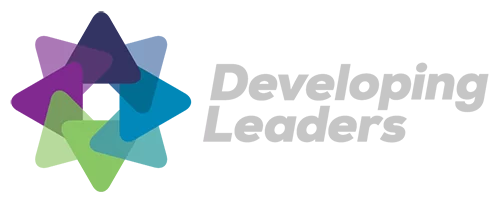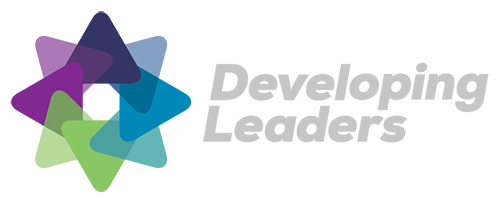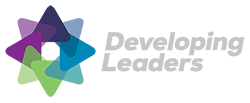An old adage states that ‘to lead others, you first need to lead yourself’. This sounds good in theory – but have you tried to apply it to yourself in the same way that you would a member of your team? If you were to develop a team member, you would have a look at their strengths and weaknesses and seek to strengthen one and develop the other.
So what are your strengths and weaknesses when it comes to your leadership behaviours?
Do your know how you behave when you are stressed and tired? As leaders, we should know our strengths and weaknesses, particularly when we aren’t at 100%. For me, when I am tired, stressed or overworked, I can come up with excuses for not getting things done. That can often follow with an awful feeling of shame for not accepting responsibility in the first place. When under stress and tired, even as a leader, these are my default responses that I have to fight against to be more responsible.
So what are your ‘default’ behaviours when you are not at your best?
Hard to say and harder to acknowledge, but in knowing your behaviours you can seek to address them and make better decisions. What default responses do you fight against when it comes to your team?
The AIR / BLEEDS model – focussing on your personal responsibility and your ability to hold others to account, provides an insight into where you may struggle to hold yourself or others to account when under pressure or stress. What these behaviours look like can be a measure of your personal efficiency and effectiveness.

When under stress, pressure or just ‘under the pump’, are you:
Accountable – Do you hold others to account?)
Intentional – Do you create a clear intention of behaviour for yourself or your team?
Responsible – Do you take ownership and accept responsibility for your actions or behaviours?
If so, fantastic! These AIR behaviours breath life into your leadership. If not, welcome to being a human being that has flaws as well as good and bad days.
At my best, I can be both responsible, accountable and intentional. At my worst? I can display other behaviours that are less efficient and effective.
Knowing what these behaviours are and how they impact not only yourself, but your team members and peers, is a significant growth opportunity as a leader.
When under pressure, stress, tiredness and overwork, which 2 of these 6 behaviours do you display?
Blame – Do you blame others for mistakes
Leniency– Are you lenient on actions where you should be firmer?
Excuses– Do you accept excuses for your behaviour or that of others?
Exonerate – Do you exonerate behaviour (pretend it didn’t happen when you know it did)
Defence – Do you defend your actions or behaviour when you know it should change (ie. do you ‘dig in’ when you know you should adapt or change?)
Shame – Do you ‘beat yourself up’ and shame yourself for your actions you know should be better?
In truth, as humans we do all of these behaviours at different times and circumstances. But in our experience, you will normally have one or two ‘go to’ behaviour when under stress.
Knowing what this is and what it looks like – and what you can do to get out of it – is essential for good leadership.
So what has this got to do with your team?
There is a very good chance that your team already knows your BLEEDS behaviour when you are under stress or tiredness – because they have seen it! Whether you choose to acknowledge it or not (and I strongly suggest that you do!), your team has already deal with what your BLEEDS behaviours look like. And lest be clear, some of these behaviours don’t have us look, sound, or act at our best.
Good leaders acknowledge and share some of these behaviours – and what it looks like – with their teams, so they can assist in identifying and assisting in changing the behaviour – which takes a great deal of trust. Team members have not only seen these behaviours before – they are probably aware of you doing it before you are. Having team members that can identify these behaviours – and who have been given the permission by you to gently call them out – is a huge advantage for the self-aware leader.
The AIRBLEEDS Model
A powerful little model with many nuances and reflections for the leader to consider! If you would like to know more about the AIRBLEEDS model or own your personal leadership, responsibility or accountability, please reach out.
#leadership #leaders #developingleaders #executivecoaching #leadershiptraining
NOTE:
You may note a similarity to another model that relates to this concept – the OAR/BED model. We acknowledge this model asa base (and would attribute to the author if their was an originator, but despite looking have not found a source – although it has been used often within training programs since the 70’s) – I believe we have significantly adapted this general model for people and adapted it for leaders in the following significant ways:
Ownership and Responsibility. We believe that ownership is the thought that occurs before the response of taking action (responsibility) – so we combines them together.
Above and Below the Line. The OAR/BED model is often referred to ‘above and below the line’ behaviours. Honestly – not a fan of describing normal human behaviours as good or bad, above or below the line. I prefer to look at them as more or less efficient behaviours. I have met plenty. ofleaders that beat themselves up for not doing as well as they would like, shaming themselves into performance. This isn’t bad (it isn’t great!) – it is just inefficient and not as effective as being responsible.
Denial. In our experience working with thousands of leaders, we could count on 1 hand the number that denied any responsibility or accountability for actions from their team. We have certainly seen leaders that could change their opinion based on new information, but refuse to change, rather ‘digging in’ and defending their positions.
Leniency / Exoneration and Shame. Given the sheer number of leaders that have stated to us that this is their default position when dealing with team members under stress, they had to be included in the model.



